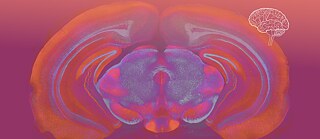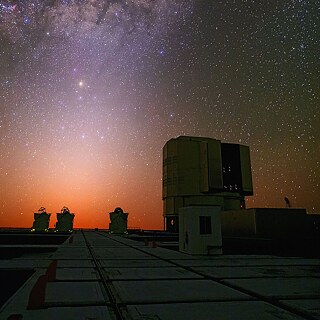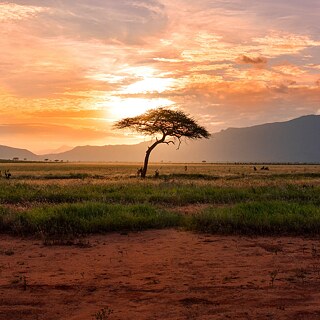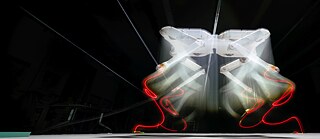
Multitude of life
Biodiversity is the variety of all living organisms, habitats and ecosystems – on land, in the water and in the air.
Biodiversity is declining almost everywhere on the Earth. Around 600 vertebrate species have become extinct since the year 1500, around 500 of these since 1900. In the past 100 years more bird species have disappeared than in the 3000 years prior to that. But it isn’t just that species are dying out, the number of individual organisms is declining too. Today there are 60 per cent fewer vertebrates on the Earth than there were in 1970.
But what does it matter if there’s a few less animals and plants on the Earth? Biodiversity is worth protecting because ecosystems with plenty of species are more stable than ones with fewer, and they are better able to compensate for irregularities. High biodiversity also has a positive effect on world climate. For instance subtropical forests that support a large number of species can absorb twice the amount of carbon as monocultures.The sea walnut – new to Europe
Time and again, species can spread into new habitats because of human influence. If these creatures have no predators in the new ecosystem, they will reproduce in large numbers and displace native species. That’s why they are also called “invasive species”.
The comb jelly Mnemiopsis leidyi, also called the sea walnut, comes from the East coast of the USA. It probably travelled to Europe in the ballast water of cargo ships and then spread out there by the ocean currents. It only takes a few stowaways for that to happen. They have been spreading prolifically in the North Sea and Baltic as well since 2005. The problem is that the sea walnut eats fish eggs, fish larvae and even young fish.
Observing animals from space
The International Space Station (ISS) orbits the Earth around 16 times a day at a height of about 400 kilometres. It also plays a major role for Icarus, an international cooperation project organised by the Max Planck Institute of Animal Behavior.
The goal of Icarus is to gain a better understanding of animal migrations worldwide. For this project, scientists fit animals all over the world – such as birds, bats, turtles or wild goats – with mini transmitters. These “tags” record a large amount of data about the behaviour of the animals and send it to the ISS as soon as it flies over the animals’ location. The antennae in space can receive hundreds of signals, even from whole swarms or herds, at the same time. The knowledge gathered about these migration movements supports behavioural research and species protection, but also research into the spread patterns of infection diseases. Even predicting ecological changes and natural catastrophes could become possible with this information. All data are published in the open-source database Movebank.
What impact does the loss of biodiversity have? The “Jena Experiment” investigates this question using the example of a grassland ecosystem. It is one of the largest biodiversity experiments in the world. Under the leadership of the Friedrich von Schiller University, scientists are conducting a long time study researching the changes to the species composition and its consequences for the ecosystem. For this experiment over 500 plots have been cultivated with up to 60 different plant species on each. The results show that a high number of different plant species has a positive effect on an ecosystem. Biodiverse meadows for example are better at absorbing surface water and more resistant to drought and flooding. They also have a positive effect on the presence and distribution of further species, for example the animals that settled there. But some parts of an ecosystem only react to change slowly. For instance evidence of an increase in soil organism diversity can only be found after around four years.
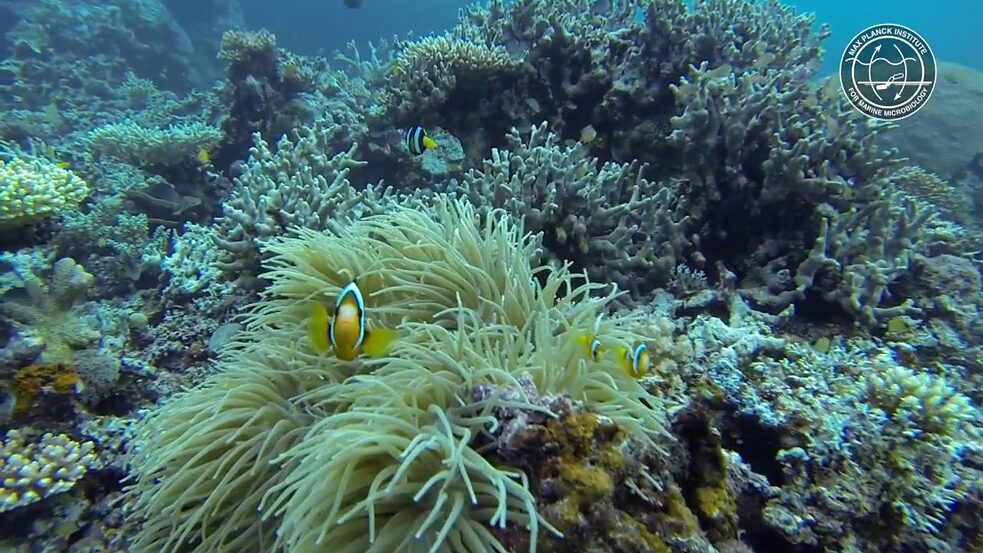 © Max-Planck-Gesellschaft
Climate change is threatening coral reefs. But investigating the full impact on location has until now been an extremely complex operation. So a team of marine researchers from the Max Planck Institute for Marine Microbiology developed the HyperDiver diving robot to help with this job. The system has an optical sensor, similar to those used in satellite systems for environmental monitoring. The state of the corals can be identified by their colour spectra. The basic principle of HyperDiver is a self-learning algorithm, a form of artificial intelligence. It can identify corals, algae and sponges autonomously. The benefit is that data can now be gathered by anyone qualified to dive – they don’t have to be a highly specialised marine biologist. The diving robot initially provides a raw data feed. These data are analysed later on land and the system automatically creates maps and reports.
© Max-Planck-Gesellschaft
Climate change is threatening coral reefs. But investigating the full impact on location has until now been an extremely complex operation. So a team of marine researchers from the Max Planck Institute for Marine Microbiology developed the HyperDiver diving robot to help with this job. The system has an optical sensor, similar to those used in satellite systems for environmental monitoring. The state of the corals can be identified by their colour spectra. The basic principle of HyperDiver is a self-learning algorithm, a form of artificial intelligence. It can identify corals, algae and sponges autonomously. The benefit is that data can now be gathered by anyone qualified to dive – they don’t have to be a highly specialised marine biologist. The diving robot initially provides a raw data feed. These data are analysed later on land and the system automatically creates maps and reports.
But what does it matter if there’s a few less animals and plants on the Earth? Biodiversity is worth protecting because ecosystems with plenty of species are more stable than ones with fewer, and they are better able to compensate for irregularities. High biodiversity also has a positive effect on world climate. For instance subtropical forests that support a large number of species can absorb twice the amount of carbon as monocultures.
The sea walnut – new to Europe
Time and again, species can spread into new habitats because of human influence. If these creatures have no predators in the new ecosystem, they will reproduce in large numbers and displace native species. That’s why they are also called “invasive species”.The comb jelly Mnemiopsis leidyi, also called the sea walnut, comes from the East coast of the USA. It probably travelled to Europe in the ballast water of cargo ships and then spread out there by the ocean currents. It only takes a few stowaways for that to happen. They have been spreading prolifically in the North Sea and Baltic as well since 2005. The problem is that the sea walnut eats fish eggs, fish larvae and even young fish.
Observing animals from space
The International Space Station (ISS) orbits the Earth around 16 times a day at a height of about 400 kilometres. It also plays a major role for Icarus, an international cooperation project organised by the Max Planck Institute of Animal Behavior.The goal of Icarus is to gain a better understanding of animal migrations worldwide. For this project, scientists fit animals all over the world – such as birds, bats, turtles or wild goats – with mini transmitters. These “tags” record a large amount of data about the behaviour of the animals and send it to the ISS as soon as it flies over the animals’ location. The antennae in space can receive hundreds of signals, even from whole swarms or herds, at the same time. The knowledge gathered about these migration movements supports behavioural research and species protection, but also research into the spread patterns of infection diseases. Even predicting ecological changes and natural catastrophes could become possible with this information. All data are published in the open-source database Movebank.
The “Jena Experiment”
What impact does the loss of biodiversity have? The “Jena Experiment” investigates this question using the example of a grassland ecosystem. It is one of the largest biodiversity experiments in the world. Under the leadership of the Friedrich von Schiller University, scientists are conducting a long time study researching the changes to the species composition and its consequences for the ecosystem. For this experiment over 500 plots have been cultivated with up to 60 different plant species on each. The results show that a high number of different plant species has a positive effect on an ecosystem. Biodiverse meadows for example are better at absorbing surface water and more resistant to drought and flooding. They also have a positive effect on the presence and distribution of further species, for example the animals that settled there. But some parts of an ecosystem only react to change slowly. For instance evidence of an increase in soil organism diversity can only be found after around four years.
Artificial intelligence on a dive

Cooperation partners

|

|
You might find this also interesting
